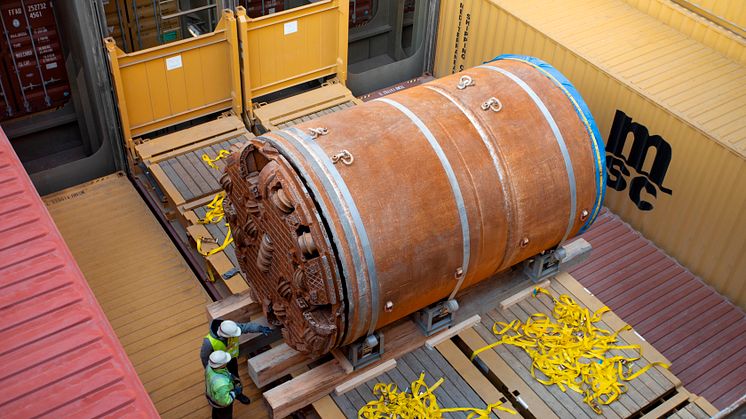
Press release -
Breakbulk cargo finds a place on container ships
Even though container ships are primarily designed to transport standard containers, they can also accommodate breakbulk cargo, items that exceed the limitations of container dimensions. This capability is especially evident on the largest container ships offering direct weekly services between the Port of Gothenburg and ports in Asia.
“We’re seeing growing interest in this option. It’s encouraging to witness our customer base expanding and recognizing the potential of our liner network. With weekly schedules and very competitive transit times, our service shows that loading and unloading a wide range of cargo on container vessels is not only feasible, it’s already happening,” says Marco Cicola, responsible for the breakbulk segment at shipping company MSC Sweden.
Container ships provide a range of possibilities for oversized and heavy freight. Depending on the vessel, breakbulk cargo can be up to 40 meters long and 12 meters wide. The largest ships operating the Gothenburg – Asia route are nearly 60 meters wide and regularly carry oversized cargo. The land-based cranes at the container terminal, which is operated by APM Terminals Gothenburg, can handle cargo weighing up to 100 tons.
This makes the transport of large and heavy cargo, such as transformers, construction equipment and key components for the steel industry, not just theoretical but a reality. These goods are regularly shipped to and from Gothenburg onboard container vessels.
Broader possibilities
The port area offers flexible loading and unloading solutions for breakbulk cargo. While the most common method is roll-on/roll-off via the port’s dedicated RoRo terminals, the container ship alternative is increasingly being utilized. Richard Mellgren, Senior Business Development Manager at the Port of Gothenburg, notes:
“Shipping breakbulk cargo on container vessels is becoming more frequent. For project cargo customers, this expands the opportunities – particularly with MSC’s direct connections to Asia. Each project cargo shipment is unique. Every case is assessed individually and transport solutions are tailored based on the port’s global network to deliver the cargo efficiently and securely”.
"As environmental considerations become ever more crucial, MSC Sweden is proud to support the decarbonization of our customers' supply chains with inland solutions, connecting imports and exports seamlessly by multimodal transport," says Marco Cicola.
Fact file: Shipping breakbulk cargo with MSC through the Port of Gothenburg
Departures: Weekly direct service to and from Asia, with two additonal weekly feeder vessel sailings to Antwerp and Bremerhaven.
Direct Destinations to/from Asia: Port Klang, Singapore, Shekou, Busan, Ningbo, Shanghai, Xiamen, Yantian.
Cargo Dimensions: Up to 30 x 12 meters.
Cargo Weight: Up to 100 tons.
Both MSC and the Port of Gothenburg will attend Breakbulk Europe 2025, taking place at the Rotterdam Ahoy 13-15 May. Stop by booths 2A20-B21, 2A21 (MSC) and 2G55 (Port of Gothenburg) to discuss MSC’s tailored project cargo solutions.
Topics
Fact file: Port of Gothenburg
The Port of Gothenburg is the largest port in Scandinavia, handling around 20% of Swedish trade and more than half of all container traffic. As a full-service port it connects business to key markets around the world, 24/7, every day of the year.
The port is committed to safe, efficient and sustainable shipping. With over 30 daily, climate-neutral rail shuttles, it offers direct, reliable connections for freight transport across Sweden and Norway. Handling energy products, vehicles, ro-ro units, containerised cargo, it plays an important role in supporting streamlined shipping operations and long-term growth in global trade.
Follow us on:
Facebook
Instagram
LinkedIn
Twitter
www.portofgothenburg.com


